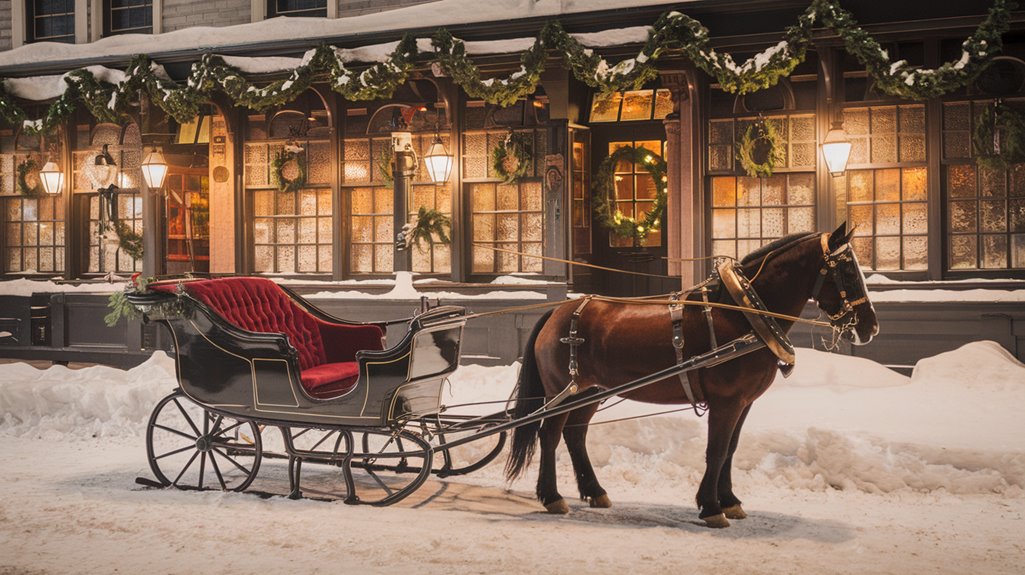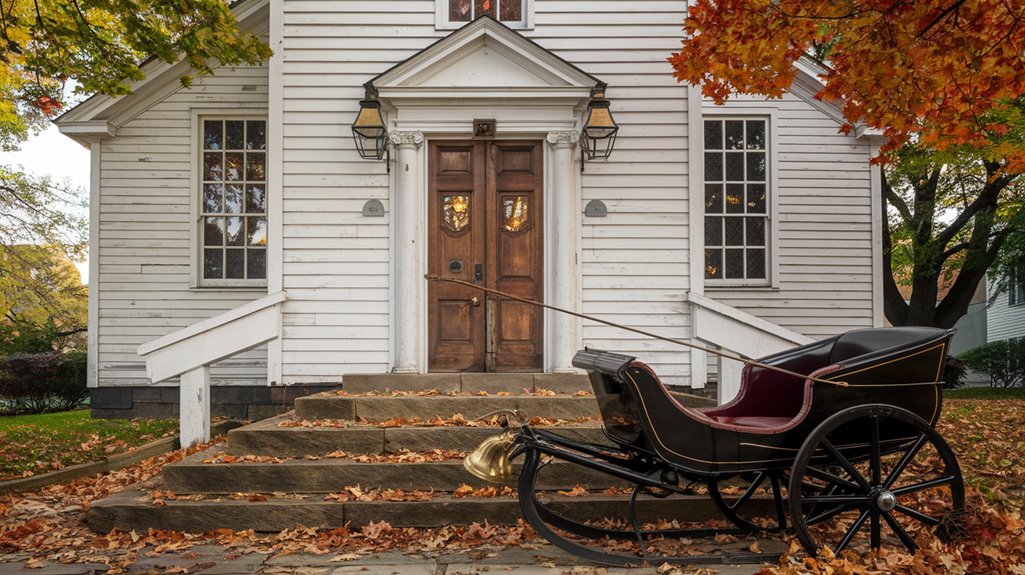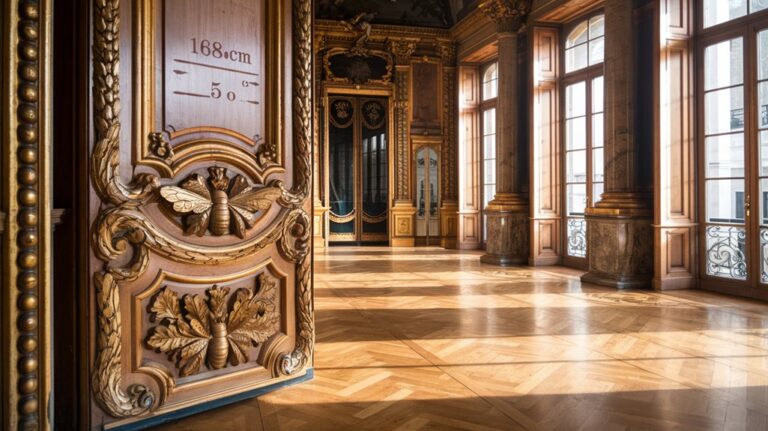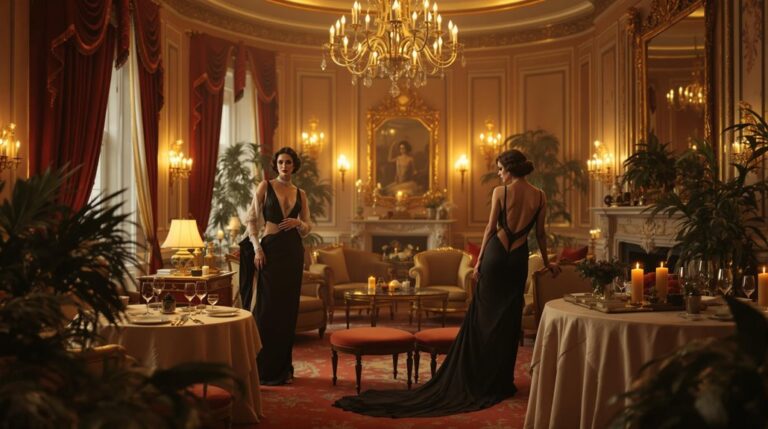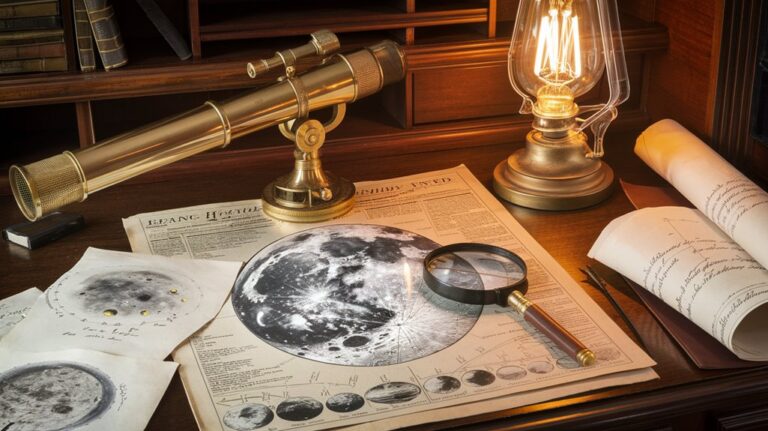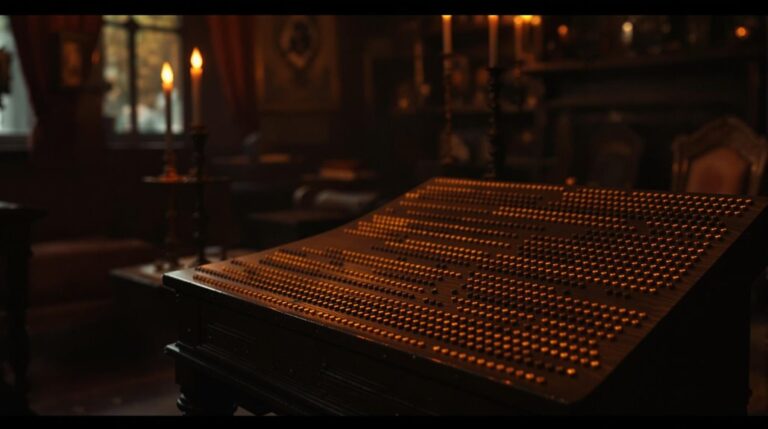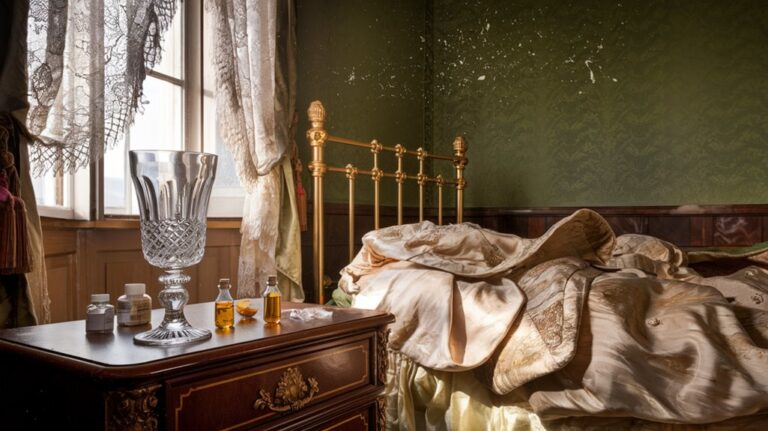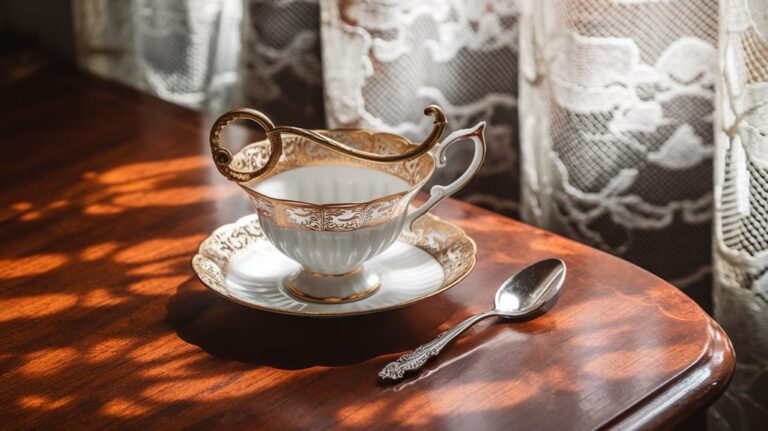Jingle Bells Wasn’t Originally a Christmas Song
You've probably sung "Jingle Bells" countless times during the holiday season, but here's something you might not know: the cheerful tune wasn't meant for Christmas at all. When James Lord Pierpont composed the song in 1857, he created it as a lively celebration of winter sleigh racing. The original title, "The One Horse Open Sleigh," reflects its true purpose as an upbeat tribute to a popular 19th-century pastime. What led this winter racing anthem to become one of Christmas's most beloved carols?
The Surprising Origins of a Holiday Classic
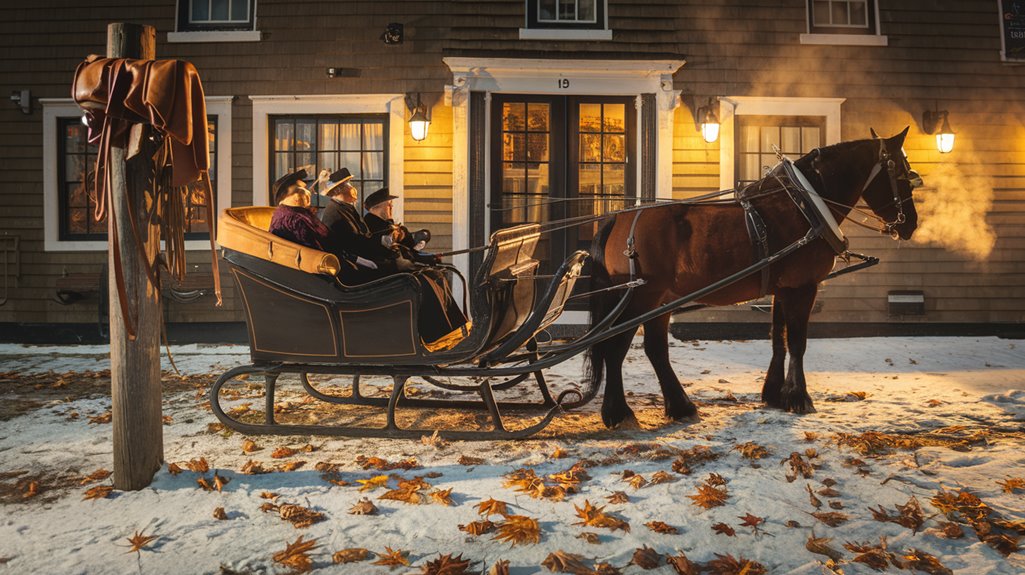
While most people associate "Jingle Bells" with Christmas celebrations, the beloved song wasn't originally written for the holiday season at all.
James Lord Pierpont composed the tune in 1857 under the title "The One Horse Open Sleigh," and it was first performed in a Boston minstrel hall that September.
The song actually celebrates sleighing culture, a popular winter activity in 19th-century America.
In fact, Massachusetts law required sleighs to have bells attached as a safety measure to warn pedestrians of approaching vehicles. The jingle bells were typically fastened to harnesses for the horses pulling these sleighs.
It wasn't until the 20th century that "Jingle Bells" became intertwined with seasonal celebrations, largely due to phonograph recordings and radio broadcasts.
Bing Crosby and the Andrews Sisters' 1943 version particularly helped cement the song's place in Christmas tradition.
Pierpont, who had previously served in the Navy until age 21, likely never imagined his song would become a holiday classic.
From "One Horse Open Sleigh" to "Jingle Bells"
Although millions know it simply as "Jingle Bells" today, the beloved winter tune began its journey under a different name. When James Lord Pierpont composed the song in 1857, he titled it "The One Horse Open Sleigh," drawing inspiration from the popular sleigh racing culture in Medford, Massachusetts.
The song first debuted in Boston through controversial blackface minstrel performances, reflecting the entertainment trends of that era. It premiered at Ordway Hall, which was notorious for its racist entertainment. The original lyrics focused on sleigh racing events rather than holiday celebrations.
You might be surprised to learn that the original version featured slightly different lyrics and a strikingly different melody in its chorus. After its initial publication, the song underwent a transformation, briefly becoming "Jingle Bells or The One Horse Open Sleigh" before settling into its current, shorter title.
It wasn't until Bing Crosby's 1943 recording that the song gained widespread popularity and its now-familiar Christmas associations.
A Tale of Two Cities: The Birthplace Controversy
Two cities fiercely compete for the honor of being "Jingle Bells'" birthplace, with both Medford, Massachusetts, and Savannah, Georgia, staking their claims. The birthplace debate has sparked intense historical research and local pride on both sides.
Here's what you'll find in each city's claim to fame:
- Medford installed a plaque near Simpson Tavern, citing sleigh races on Salem Street as Pierpont's inspiration.
- Savannah erected a sign in 1985 and points to the song's 1857 performance at their Unitarian Church.
- Historical evidence shows Pierpont worked as an organist in Savannah, though he may have been in California during the song's composition.
The song was originally called "The One Horse Open Sleigh" when it was first published before gaining its current title in 1859.
The song was actually written for a Thanksgiving concert and wasn't intended to be a Christmas carol at all.
Recent research by theatre historian Kyna Hamill has complicated matters further, suggesting neither city may be the true birthplace of this beloved tune.
Racing Through History: Winter Entertainment in the 1850s
As the birthplace debate continues between Medford and Savannah, understanding the winter entertainment culture of the 1850s sheds new light on "Jingle Bells" and its origins.
Winter sports were deeply woven into the social fabric of this era, with skating history reflecting a remarkably inclusive pastime that crossed gender and economic boundaries. You'd find people of all ages gliding across frozen rivers, thanks to affordable steel-bladed skates available at local shops. Red Mountain Ski Area closed in 1966 due to competition and unpredictable snowfall patterns.
While sledding faced legal restrictions in many towns, it didn't stop adventurous groups from racing down hills like Eighth Street in Glenwood Springs. The Netherlands traditionally used skating as a way for villages to communicate during winter months.
Skiing was transforming from a practical mode of transportation into an exciting sport, especially after Sondre Norheim introduced curved-sided skis. These winter activities weren't just entertainment—they were essential social gatherings that brought communities together.
The Journey From Thanksgiving to Christmas Tradition
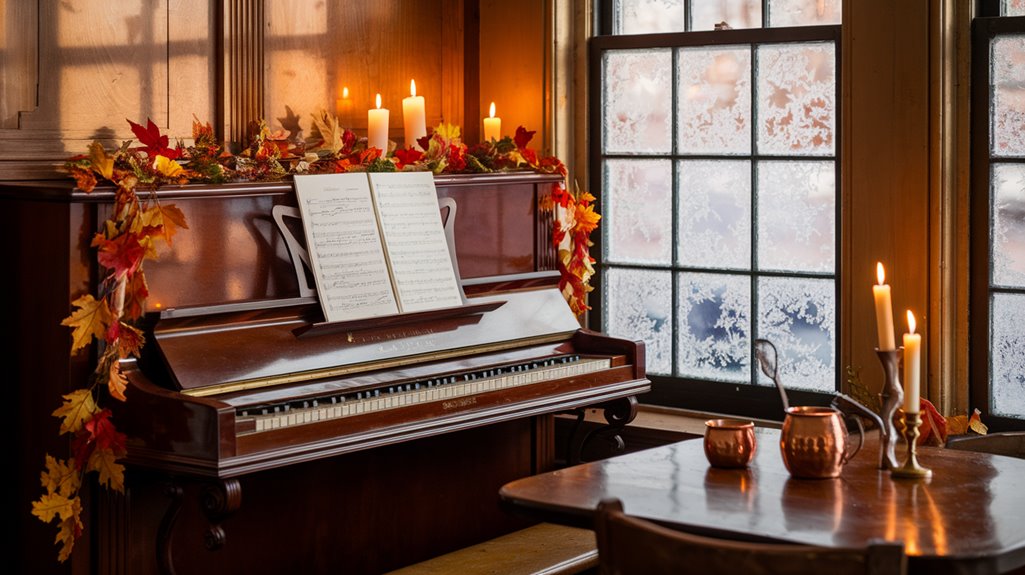
When James Lord Pierpont first performed "The One Horse Open Sleigh" at a Thanksgiving concert in 1857, he couldn't have imagined its eventual transformation into a Christmas classic.
The song's journey from Thanksgiving celebrations to Christmas tradition spans decades, with its origins deeply rooted in sleigh racing culture rather than holiday festivities. The song was initially performed by Johnny Pell in blackface at Ordway.
You might be surprised to learn how the song evolved from its original context to become a Christmas staple. In fact, the song was first copyrighted in Savannah, Georgia, far from any snowy winter scenes it describes.
Here's how it happened:
- The Edison Male Quartette recorded it as part of a Christmas medley in 1898
- Bing Crosby and the Andrews Sisters popularized it in the 1940s
- The song was republished under "Jingle Bells" in 1859, moving away from its Thanksgiving roots
Today, you'd hardly recognize its origins as a celebration of winter sports rather than Christmas cheer.
Cultural Impact and Musical Evolution Over Time
The cultural footprint of "Jingle Bells" extends far beyond its humble Thanksgiving origins.
You'll find this song has transformed from a simple American tune into a worldwide phenomenon, with countless cultural reinterpretations across different musical genres and languages.
Originally published as "The One-Horse Open Sleigh" in 1857, the song first echoed through Boston's Ordway Hall during Johnny Pell's performance. James Lord Pierpont composed this timeless melody, forever changing the landscape of holiday music.
 first song in space during the Gemini 6 mission.
first song in space during the Gemini 6 mission.
You can trace its recording history back to 1889 on Edison cylinders, though the earliest surviving version dates to 1898.
From Bing Crosby to The Beatles, artists have continually reimagined the melody, cementing its status as one of the most recognizable holiday tunes worldwide.

